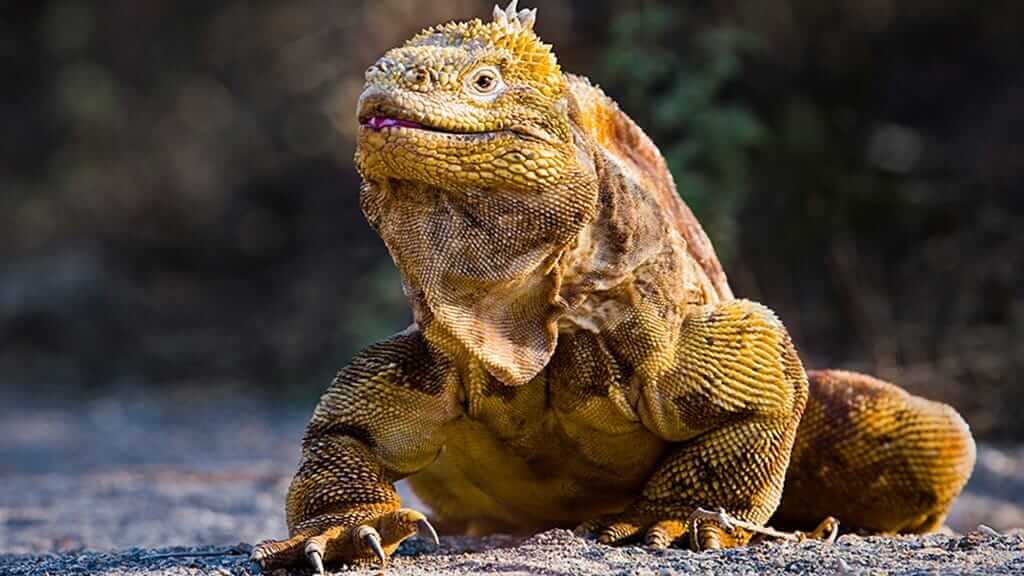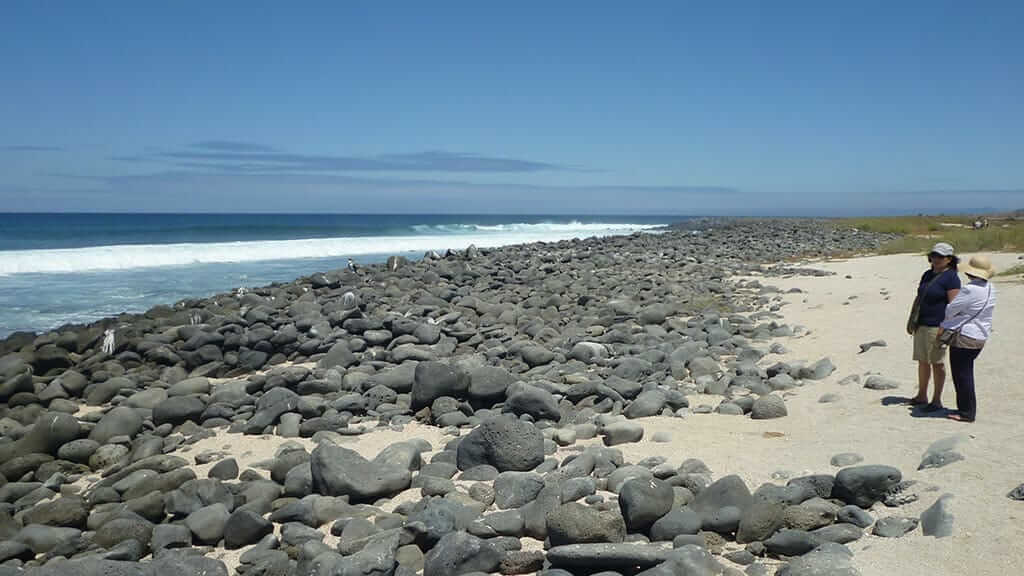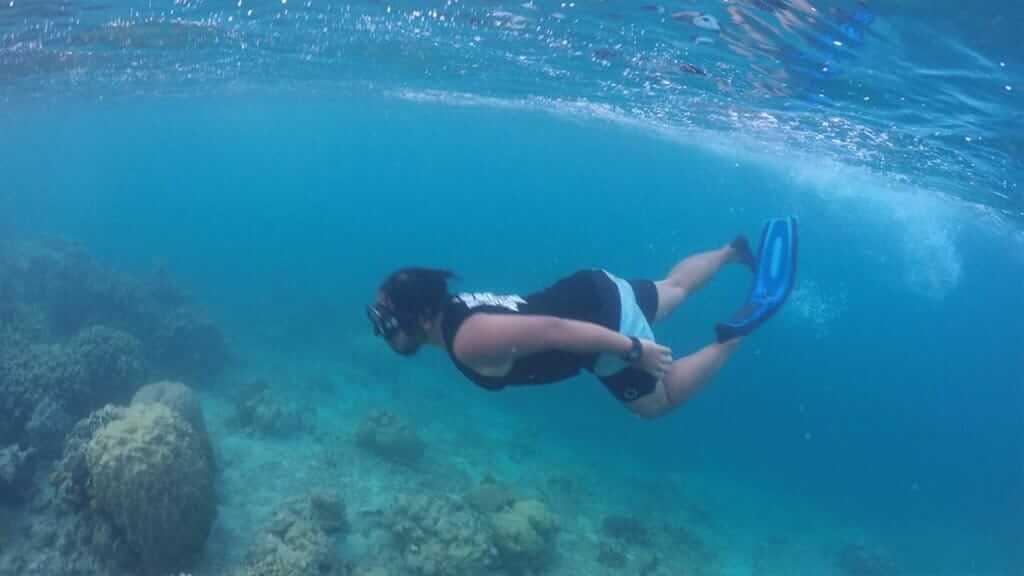NORTH SEYMOUR ISLAND (Seymour Norte)
North Seymour Island is a Galapagos visitor site not to be missed! Although small in size, North Seymour is popular thanks to its wonderful diversity of Galapagos land and marine life. A 1-day tour to North Seymour Island can easily tick off a long list of iconic Galapagos Island animals. North Seymour is especially renowned for Galapagos birds, with large, nesting seabird colonies to explore. The snorkeling and diving action at North Seymour Island is also highly recommended.
Keep reading for everything you need to know to plan your visit to North Seymour Island Galapagos. What wildlife can you spot at North Seymour? What are the best activities and visitor sites there? Plus discover the interesting history and geology of this island.
SECURE YOUR GALAPAGOS TRAVEL
Get a FREE personalised quote todayNorth Seymour Island Galapagos Wildlife Highlights:
• North Seymour Island is home to a large resident colony of blue-footed boobies, making it a great spot to see their famous courtship dance (usually from June to August).
• Both Magnificent and great frigate birds nest in the bushes, inflating their red pouches to attract a female mate (the best month for this spectacle is June). See if you can spot the difference between the two different species.
• North Seymour Island is home to one of the largest sea lion colonies in the Galapagos. It's easy to spot them lazing on the beach, or swimming along the shore.
• Keep a lookout for North Seymour Galapagos Land Iguanas, camouflaged against the arid scrub or lounging under cactus plants.
• North Seymour Island has amazing marine life too. Snorkel with thousands of colorful Galapagos fish, sea lions, reef sharks, sea turtles, sting and manta rays, eels, and maybe even hammerhead sharks.
About North Seymour Island
English Name: North Seymour
Ecuadorian Name: Seymour
Total Area: 0.73 sq miles
North Seymour Population: zero (uninhabited)
At first sight, North Seymour may not look beautiful to the eye, it's flat and dry, and may give you a choppy landing. But don’t be fooled by first impressions. The island's arid habitat makes it the perfect home for Galapagos reptiles and an interesting land visit. The surrounding seas are also richer in nutrients than many other regions of the archipelago, so it's a top spot for snorkeling, with frequent shark sightings. North Seymour Island is also an important seabird nesting area, perfect for keen bird watchers.
So, let's get to know the island of North Seymour a little more ...
North Seymour Island Geology
Unusually for the Galapagos islands, North Seymour Island is not a volcano. Instead, the island was formed by the tectonic uplift of seismically shifting plates underneath the ocean. Imagine the flat sea bed being pushed upwards and emerging above the sea. Even today visitors can see evidence of shells and large rocks that used to be underneath the ocean on the seabed.
North Seymour Island Habitat
The North Seymour ecosystem is a good example of the Galapagos arid vegetation zone. It is a very dry island, with low bushes and sparse Palo Santo and Opuntia Cactus forests.
GET FREE ADVICE
From a Galapagos destination expert todayNorth Seymour Island History
As with most Galapagos Islands, there is a history behind the name. In North Seymour’s case, the name originates from the famed English gentleman and courageous Royal Navy officer, Lord Hugh Seymour. He was a wealthy landowner at the time the British were exploring the world, and giving names to each island. Interestingly, North Seymour is one of very few Galapagos Island names that were not later changed to Spanish names.
Fun North Seymour Fact
Originally North Seymour Island had no land iguanas. So, back in the 1930s, visiting naturalist Allan Hancock decided to move 70 iguanas here from nearby Baltra island (South Seymour). North Seymour is the perfect habitat for the land iguana, with abundant food of Opuntia cactus pads and fruit. So, the new arrivals thrived and multiplied, eventually forming a large population in the thousands.
Meanwhile, back on Baltra island, the Land Iguanas were unfortunately not faring so well. Baltra was used as a Second World War US airbase, and GIs wiped out the native iguana population after using them for target practice.
So, in the 1950s, North Seymour was able to return the favor to Baltra, repopulating this important species back to their original island. Today, both islands have healthy land iguana populations. For many visitors to the Galapagos Islands, the Baltra Land Iguana will be the first species you spot when disembarking the plane.
Where is North Seymour Island?
How to visit North Seymour Island?
This small island is just an hour or so of navigation from the Itabaca Channel, making it an ideal day tour destination from Puerto Ayora (Santa Cruz). There are daily North Seymour Island tour departures from Puerto Ayora on Santa Cruz Island.
A North Seymour day tour can easily be included in a Galapagos Land Tour itinerary and is also often visited by Galapagos Cruise yachts.
Contact us for a FREE TOUR QUOTE, or for more information to plan your Galapagos vacation.
North Seymour Island Galapagos Visitor Sites
Visitors to North Seymour can enjoy gentle trekking to explore the island by land, including the observation of seabird nesting sites. North Seymour is also one of the best marine areas in the Galapagos, with wonderful snorkeling opportunities. Keep reading for more details about each activity.
1. North Seymour Island Trek
Landing Type: Dry
Trail length: 1.5 miles (2.5km)
Terrain: Mostly flat along an easy path
The dry dock landing at North Seymour Island can sometimes be quite choppy, so take care disembarking the panga (zodiac).
The visitor trail is circular, exploring both the coastal region and the interior of the Island. The trail is flat and easy, following a circular loop over rocky terrain, through Palo Santo and Opuntia cactus forest.
The picturesque North Seymour Island coastal trail follows the surf past a noisy sea lion colony. Sea lion pups like to play in the surf, while mothers snooze on the beach. Marine Iguanas and Sally Lightfoot crabs can also be spotted along this route.
Turning inland, the habitat changes to arid scrubland, leading visitors into the heart of the largest Frigate Bird colony at the Galapagos Islands. Here you can spot both Magnificent and Great Frigates. June is a great month to see the wonderful spectacle of male frigates trying to attract a female to their nest. They inflate their impressive red-throat pouches like balloons and spread their wings to attract attention. Females fly overhead, sizing up their options, before choosing their mate.
This stretch of the trail also passes close to a blue-footed booby nesting site. Their breeding season runs from June to August when lucky visitors can witness their groovy mating dance. July to September are the best months to see their cute, fluffy chicks. Also, keep your eyes peeled for land iguanas resting in the shade of opuntia cactus. They blend surprisingly well into the scrubland, with perfect camouflage. The trail winds back to the dry dock where your boat will be waiting.
2. North Seymour Snorkeling
The area around North Seymour Island is one of the very best snorkel and dive sites at the Galapagos islands. The upwelling phenomenon in the sea here means the water is cold, and full of rich nutrients, making perfect conditions for marine species.
There are several different North Seymour snorkel sites available. Your naturalist guide will choose the most suitable one based on local conditions on the day. Currents are not usually too strong here.
Some of North Seymour Island's underwater highlights include Green Sea Turtles, Sea lions, Whitetip reef sharks, and an array of colorful reef fish such as King Angelfish, Parrotfish, Hogfish, and Rays. Sometimes lucky snorkelers might even spot Hammerhead or Tiger sharks cruising through the area.
3. North Seymour Diving
Scuba diving enthusiasts should book aboard a North Seymour Island Dive Tour, available in Puerto Ayora. This dive site is suitable for both beginners and experienced divers.
The dive starts by descending gradual steps from the shore to a nice rock reef, before reaching the sandy bottom at 16–18 meters. This area is often frequented by reef sharks (white and blacktip, as well as green sea turtles. Large schools of barracuda, snapper, and other reef fish are always around. Other top targets to spot include octopi, spotted eagle rays, and occasionally Manta rays or small schools of hammerhead sharks.
The #1 Trusted
Galapagos Travel Agency
In conclusion, North Seymour Island should definitely be on your radar when planning your trip to the Galapagos. This small island has something for literally everyone, on land and in the sea. Not only is it one of the very best islands to observe large colonies of seabirds, but it tops it all off with an unforgettable snorkeling experience. What's not to love?
Note: All wildlife sightings are by their very nature unpredictable.









